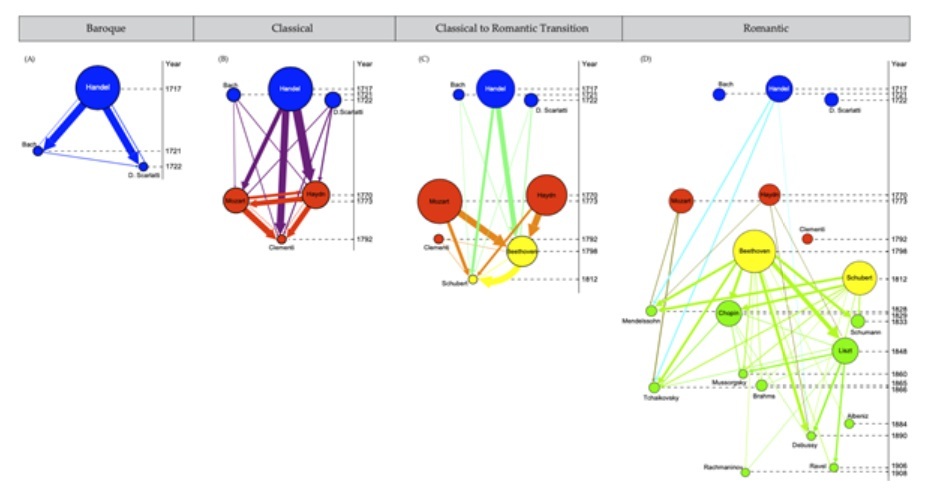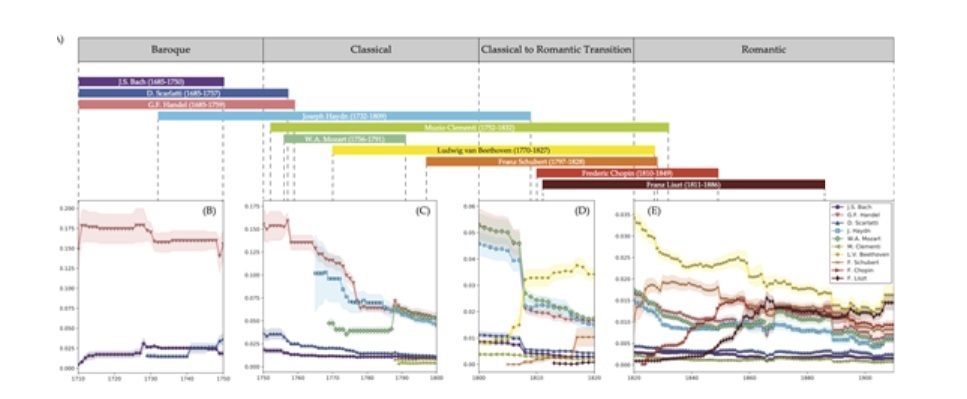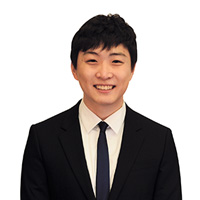KAIST team uses data to show Beethoven’s influence, Rachmaninoff’s novelty
By Lim Jang-wonPublished : Feb. 9, 2020 - 18:05

If one’s influence on the future can be taken as a measure of one’s greatness, a new study has added to Beethoven’s credentials as a great composer: Researchers at Korea Advanced Institute of Science and Technology have found him to have the most influence on the composers that came after him.
Park Ju-yong, a professor at KAIST Graduate School of Culture Technology, and his team published a paper online in EPJ Data Science on Jan. 30 that quantifies novelty and influence of famous composers by developing an algorithm to analyze 900 piano compositions by 19 composers.

After converting musical pieces into sequences of “codewords” that correspond to combinations of simultaneously played notes, Park used the algorithm to evaluate the novelty and influence of the codeword transitions in each piece.
A comparison of the values among the piano composers, who were all active between 1700 and 1900, showed Beethoven to have had the highest influence on future composers, while Rachmaninoff was found to be the most innovative composer.
The research showed Handel as the most influential during the Baroque period, Mozart and Haydn during the Classical period and Beethoven during the Romantic period. Beethoven was the most influential composer for nearly 100 years after his death up to 1900, the end point of the data set for the research.
The study also showed novelty is not the sole reason for recognition, as Beethoven’s novelty value was among the lower half.
“That isn’t to say Beethoven wasn’t novel compared to his contemporaries. He is compared with other famous composers in this paper which puts Beethoven relatively low on the scale of novelty. The case of Beethoven is interesting because the novel attempts he made were considered important and regarded in the highest esteem by many,” said Park. “There is a somewhat positive correlation between novelty and influence, but too much novelty can lead to discomfort. This is similar to the Wundt curve in psychology where a moderate level of stimuli can be pleasing, but intense stimuli can be displeasing.”
The researchers evaluated the originality of the pieces in two ways: how distinct a composer’s work was from his previous works -- or personal novelty -- and how distinct it was from the work of previous composers – historical novelty.
These two measures tended to correlate – when personal novelty was high, historical novelty was higher. One interesting outlier was Classical-period composer Clementi, whose work had high personal novelty but low historical novelty, providing an explanation as to why he was highly regarded during his time, but not as much in later times.
“This means that while he produced works distinct from his own earlier works (even more so than Handel, Mozart, and Haydn, and on par with Beethoven), they as a whole would sound conventional when compared with other composers’,” the researchers wrote.

Rachmaninoff, the famous Romantic era composer, was shown to be the most novel of the 19 composers, continuously trying distinct styles not only from past conventions but also from his previous works.
Park’s algorithm can be applied to otehr fields, such as literature, art and architecture where codewords could correspond to word, color or shape.
“We have shown that the problem of quantifying creativity of artistic creations, which has hindered research, can be solved by using big data and network science,” said Park. “As the presence of artificial intelligence grows in field of artistic creation, this result can help contribute to the creation of artificial creativity that can maximize human creativity and artistic talent.”
By Lim Jang-won (ljw@heraldcorp.com)
-
Articles by Lim Jang-won



















![[Today’s K-pop] BTS pop-up event to come to Seoul](http://res.heraldm.com/phpwas/restmb_idxmake.php?idx=642&simg=/content/image/2024/04/17/20240417050734_0.jpg&u=)